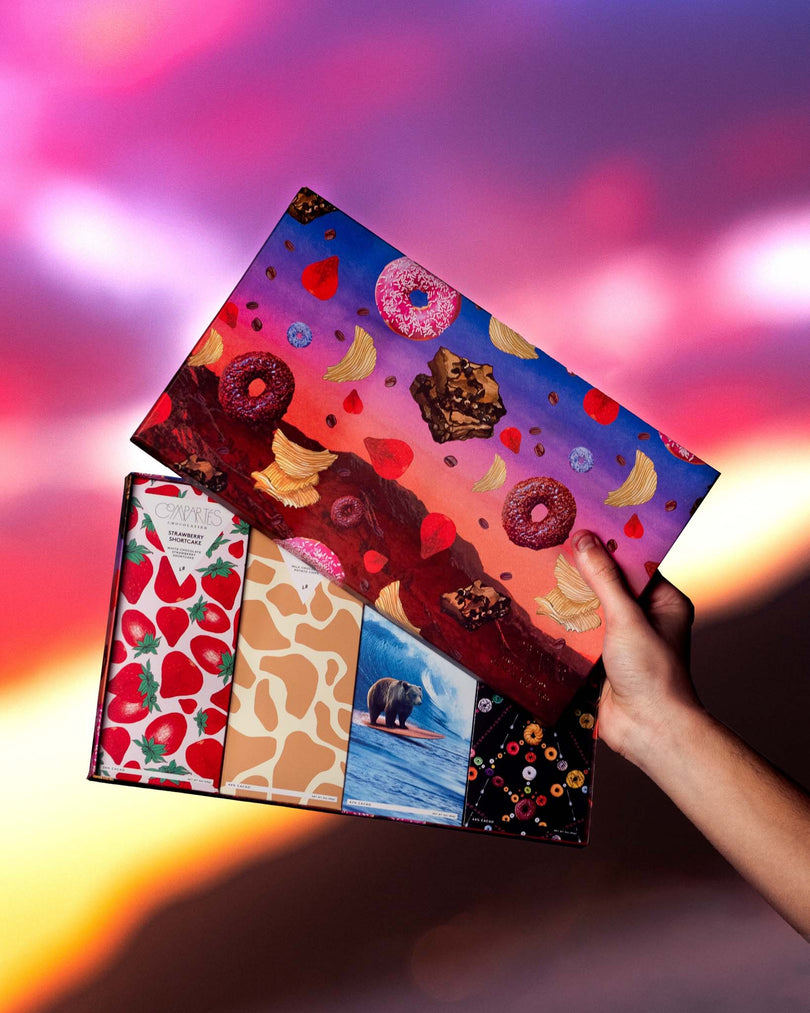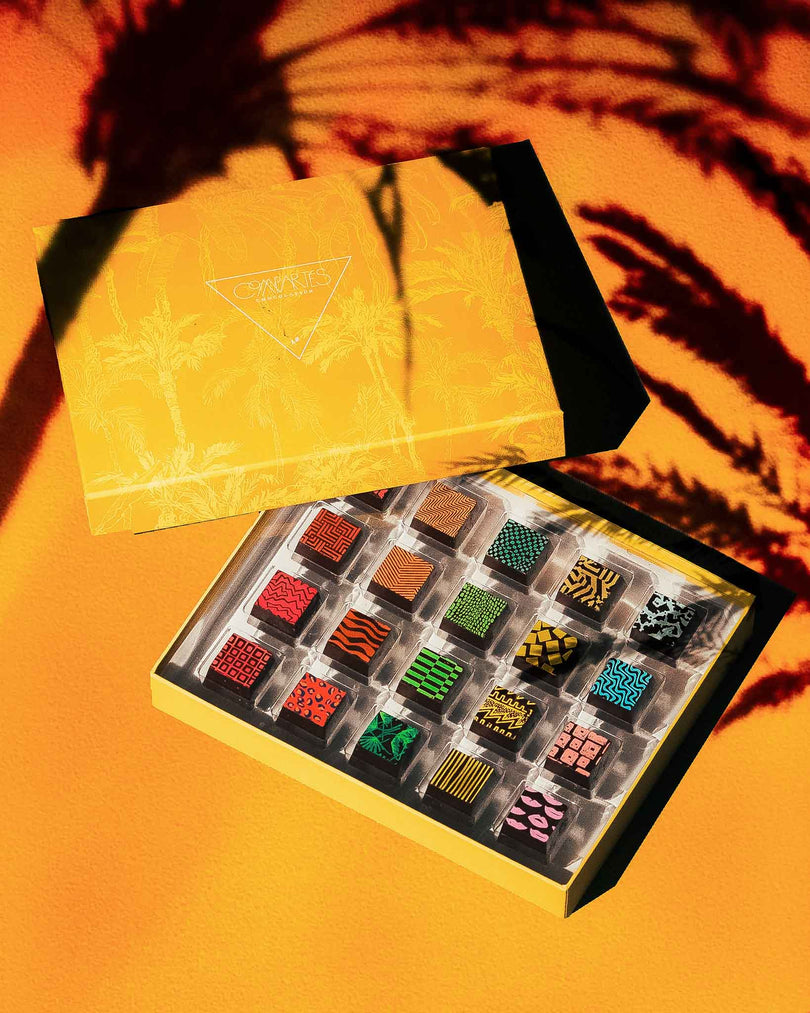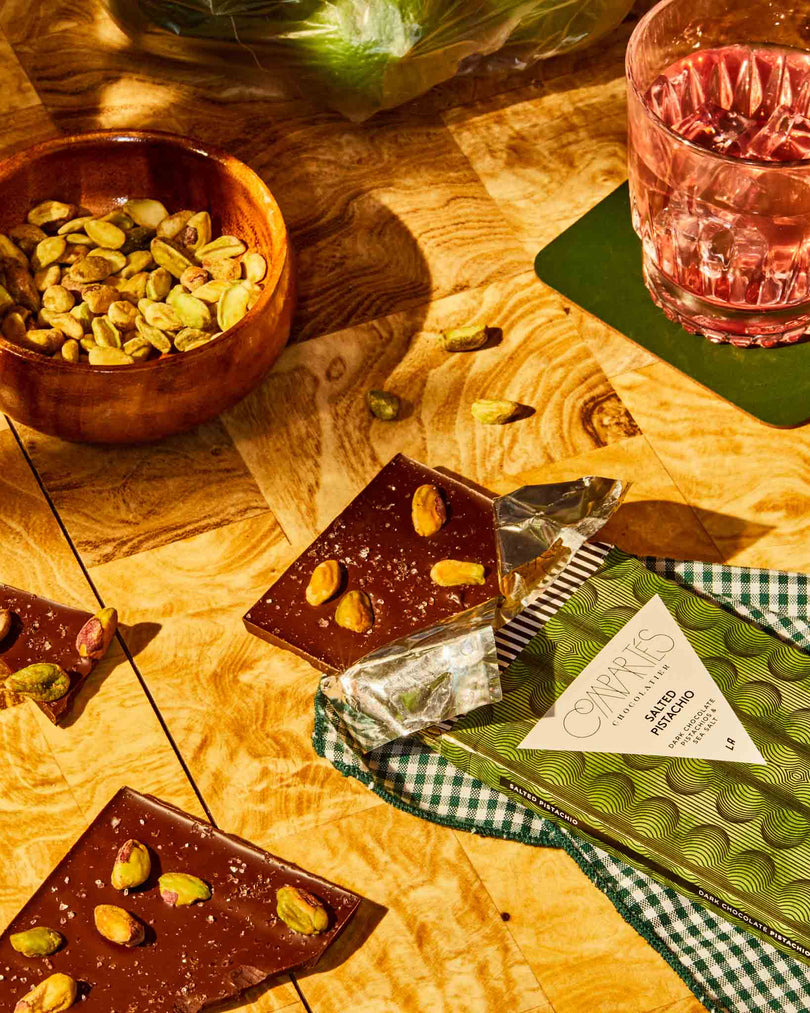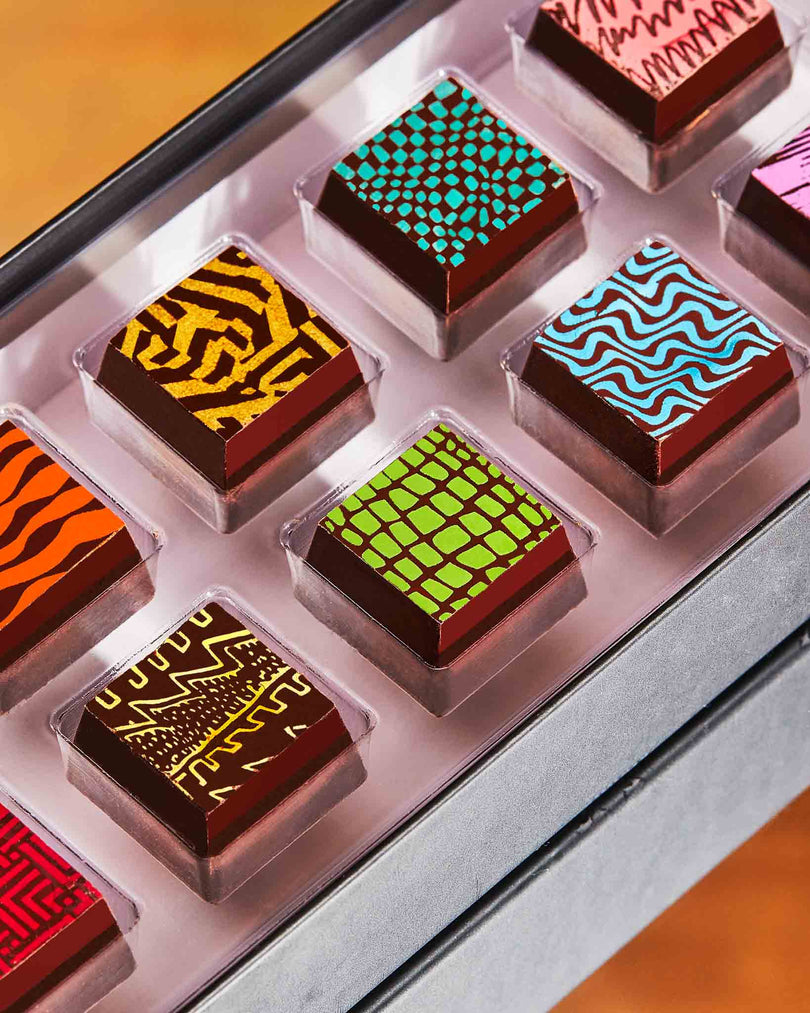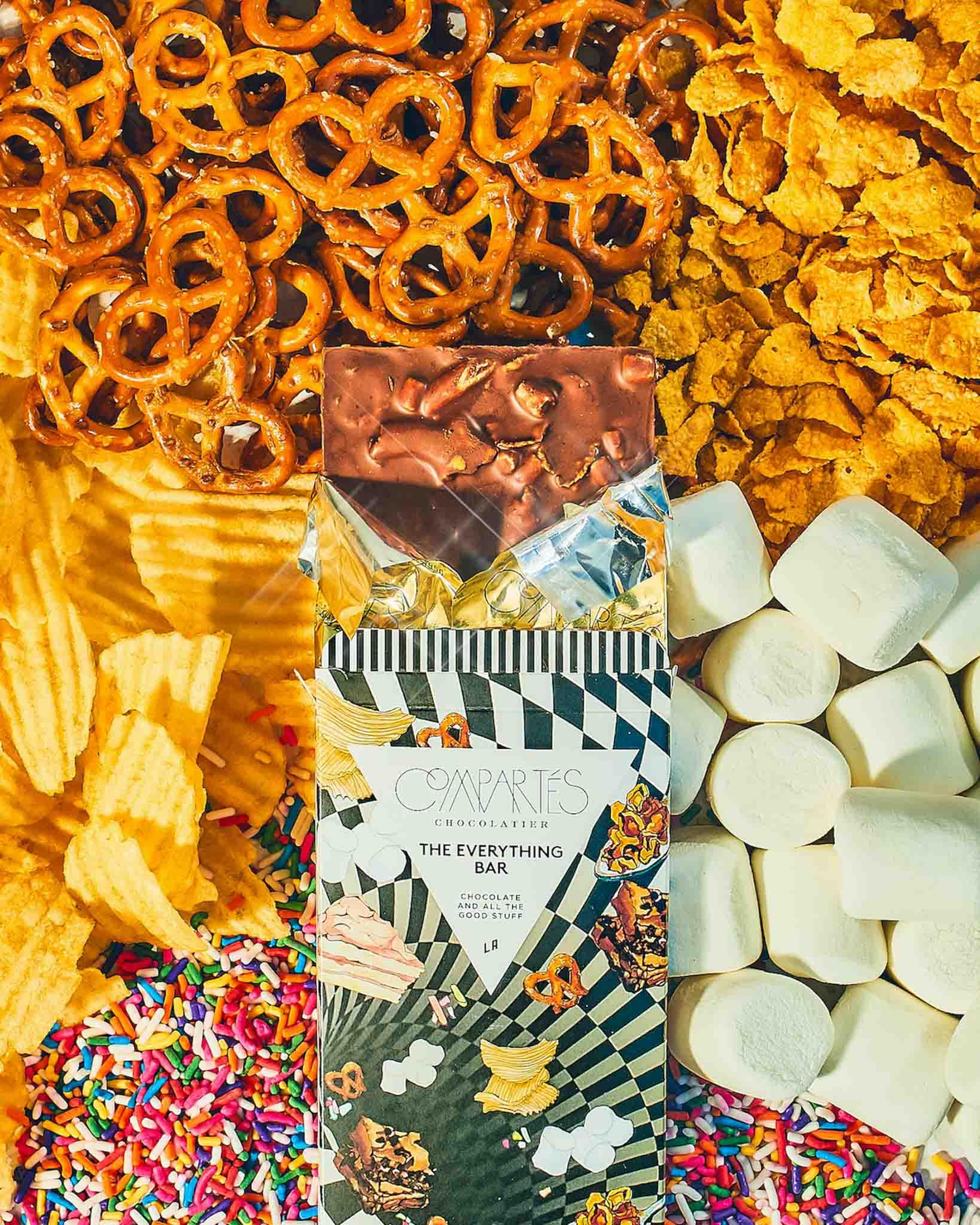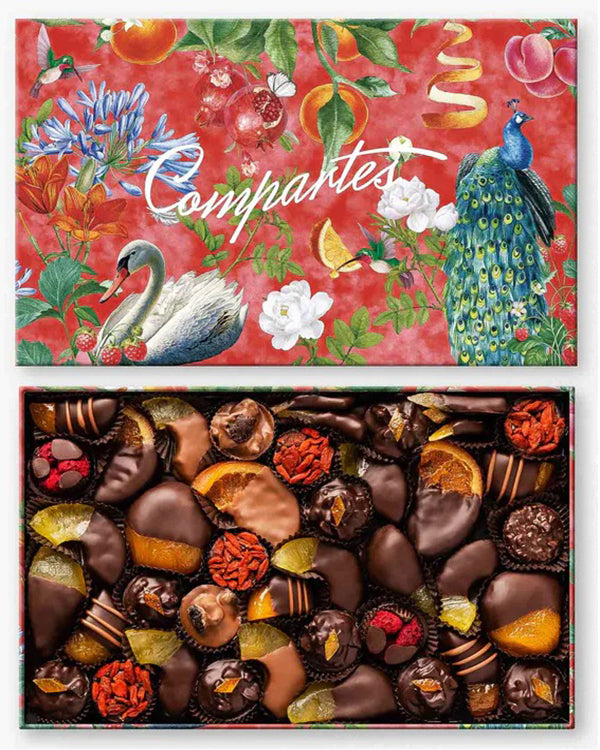Few things in this world evoke the same universal delight as chocolate. It's a global favorite, adored by people from all walks of life. But when we say "chocolate," we're not talking about just one thing. We're talking about a tantalizing world of flavors, textures, and experiences, each one waiting to be savored and enjoyed.
Today, we'll dive into the different types of chocolate, their delightful uses, and the potential health benefits they may bring. Whether you're a devoted chocolate connoisseur or simply curious about the cocoa-infused universe, this journey promises to be a sweet one.
How Many Types of Chocolate Are There?
Have you ever stopped to think about just how many different types of chocolate are out there? The world of chocolate presents an array of choices, each with its own flavor and character shaped by production and ingredients.
Amidst the many options of chocolates, which we'll delve into shortly, they’re are actually four main types of chocolate that stand out for their unique profiles and wide acclaim.
What Are the 4 Types of Chocolate?
1. Milk Chocolate

Milk chocolate, the epitome of classic indulgence, is made from a harmonious blend of chocolate liquor, cocoa butter, sugar, and milk. This beloved variety is characterized by its light brown color, irresistibly creamy texture, and a sweet flavor profile that often includes notes of caramelized sugar and vanilla.
It strikes a perfect balance, being sweeter and softer than dark chocolate, but not as sweet as white chocolate. Milk chocolate's comforting aroma and velvety smoothness make it a favorite, ideal for everything from a simple treat to gourmet confections.
2. Dark Chocolate

Dark chocolate, known for its deep brown color and sophisticated taste, is less sweet than its milk counterpart. It is primarily made from chocolate liquor and sugar, with occasional additions of vanilla and soy lecithin for smoothness.
Depending on the cocoa content, which often ranges around 50% but can be much higher, dark chocolate's flavor can vary significantly. It may have notes of baked brownies and warm spices like cinnamon or allspice. The higher cocoa content and reduced sugar give dark chocolate a firmer texture and a more pronounced chocolate taste than milk chocolate. It's a favorite among health-conscious consumers and is ideal for recipes requiring a deep, chocolatey essence.
3. White Chocolate

In contrast to its darker counterparts, white chocolate boasts an ivory elegance. Its composition includes sugar, cocoa butter, milk, vanilla, and lecithin, which grants it a sweet vanilla aroma. It stands apart for its lack of cocoa solids, relying instead on cocoa butter, milk, and sugar to create a rich, soft, and creamy texture.
Despite the absence of cocoa solids, white chocolate earns its place in the chocolate family due to the presence of cocoa butter, and it's cherished for its distinct, dairy-forward taste. Its creamy texture and sweet aroma make it an exquisite choice for both indulgent snacking and culinary creations.
4. Ruby Chocolate

Ruby chocolate, the newcomer to the chocolate scene, brings a burst of color and flavor. Its striking red-pink hue is derived from the rare ruby cocoa bean, grown in regions like Ecuador, Brazil, and the Ivory Coast.
With a composition of 47.5% cacao and 26.3% milk, ruby chocolate offers a one-of-a-kind tasting experience. It attracts with intense fruitiness and fresh sour notes, resulting in a vibrant and tantalizing flavor profile.
Although it lacks an official FDA definition, ruby chocolate has quickly become the darling of chocolatiers and confectioners, ideal for crafting bold, fruit-chocolate treats and stunning confections that grace social media feeds.
As you can see, when you browse the chocolate aisle at your local grocery store or a chocolate shop, you'll find that each variety of chocolate fits into one of the four main categories listed above. These categories exist because of the diverse combinations of ingredients and varying levels of cocoa content used in their creation. Each type of chocolate offers unique characteristics and caters to different taste preferences.
Exploring the Other Types of Chocolate
Chocolate Liquor
At the heart of all chocolate types is chocolate liquor, the pure, unsweetened chocolate essence of the cocoa bean. It's a thick, dark paste made from finely ground cacao nibs, which when heated, transforms into a liquid form used to create various chocolate products.
This liquor, boasting a 100% cocoa content, can be separated under high pressure into cocoa butter and cocoa powder, the latter also known as cocoa solids. Despite its name, chocolate liquor contains no alcohol, making it a versatile base for all chocolate varieties.
Bittersweet Chocolate
A close relative of dark chocolate, bittersweet chocolate is your gateway to an even deeper cocoa journey. Often referred to as extra-dark chocolate, it thrills the palate with a higher cocoa percentage, typically around 66% or more, while sugar comprises less than one-third of its composition. The result is a nuanced and slightly bitter profile, perfect for connoisseurs seeking a robust, less-sweet but rich chocolate flavor.
Bittersweet chocolate can vary in flavor, depending on the origin of the cacao, with some displaying fruity notes, while others exhibit deep, earthy undertones. It is a versatile choice for both baking and snacking, adding a touch of sophistication to your chocolate experience.
SemiSweet Chocolate
Semi-sweet chocolate is a versatile and widely used chocolate variety that falls between dark and milk chocolate in terms of sweetness. It typically contains more than 35% chocolate liquor, and while it's less sweet than milk chocolate, it retains a balanced level of sweetness.
Semisweet chocolate adds a rich, chocolate flavor to recipes, making it a popular choice for baking cookies, brownies, and other desserts.
Gianduja Chocolate
Originating from Italy, Gianduja is a blend of cocoa and hazelnuts. Its creation dates back to the early 1800s as a solution to high cocoa powder prices.
The inclusion of ground hazelnuts with cocoa powder resulted in a delightful treat with a smooth mouthfeel and a flavor profile rich in hazelnuts. Gianduja's light brown, almost orange-like color, and nutty taste make it a unique and luxurious addition to the chocolate family.
Cocoa Powder
Cocoa powder, including dark baking chocolate, is derived from chocolate liquor, with the cocoa solids being separated under high pressure and then ground into a fine powder.
There are two main types: Natural cocoa powder, which is lighter in color with a strong, slightly acidic rich chocolate flavor, and Dutch-processed cocoa powder, which undergoes an alkalization process to neutralize acidity, resulting in a darker color and milder flavor.
Cocoa powder, along with dark baking chocolate, is a staple in baking, adding depth and richness to cakes, cookies, and other desserts.
Couverture Chocolate
Couverture chocolate is the choice of professional chocolatiers, known for its high percentage of cocoa butter and chocolate liquor. This results in a chocolate that melts smoothly and evenly, setting into a thin, glossy, and snappy finish.
Available in dark, milk, and white varieties, couverture chocolate's superior melting properties and exquisite taste make it ideal for dipping and creating elegant chocolate creations.
Cacao Nibs
Cacao nibs are the purest form of chocolate, consisting of 100% crushed cacao beans. These dark, crunchy, and slightly bitter bits are loaded with antioxidants and healthful properties, making them a popular choice for adding a raw, intense rich chocolate flavor to a variety of dishes and snacks.
As you can see, the existence of these different types of chocolate underscores the versatility of cocoa and its ability to be crafted into a wide array of taste experiences. By adjusting the proportions of cocoa solids, cocoa butter, sugar, and milk, chocolatiers create a delightful spectrum of flavors and textures.
This variety ensures that chocolate enthusiasts can savor chocolates customized to their distinct preferences, whether they yearn for a deep, rich chocolate flavor or prefer the silky sweetness of a creamy texture.
What Are the Benefits of Chocolate?

The benefits of chocolate, particularly dark chocolate, extend beyond its indulgent taste, offering a blend of potential health benefits. While all types of chocolate, including milk chocolate, are celebrated for their delightful flavors, dark chocolate stands out with its unique qualities, though the specifics of these benefits are still being explored:
- Dark Chocolate and Sweet Cravings:One of the key attributes of dark chocolate is its ability to satisfy sweet cravings without the need for excessive indulgence. The richer, more intense flavor of darker chocolates provides a satisfying experience, often requiring smaller portions to fulfill those cravings for something sweet. This can be especially useful for those aiming to manage their sugar intake and reduce the risk of health issues associated with high sugar consumption.
- Heart Healthy Flavanols in Dark Chocolate: In addition to helping control sugar cravings, dark chocolate is thought to have other health benefits. Its high cocoa content is a source of flavanols, which may support heart health and improve insulin sensitivity.
- Antioxidants in Dark Chocolate:Additionally, the antioxidants present in dark chocolate are believed to combat free radicals, potentially aiding in the fight against aging and various health conditions. Some studies suggest that dark chocolate might also contribute to mental well-being, possibly enhancing mood and cognitive function.
By incorporating dark chocolate into a balanced diet, individuals can relish the exquisite taste of chocolate while embracing its potential health benefits. It's a way to indulge in the pleasures of chocolate while making mindful, health-conscious choices.
The Versatile Uses of Chocolate
Chocolate, with its rich and complex flavor profile, is an incredibly versatile ingredient in the culinary world. Its ability to transform into various forms – liquid, paste, or solid block – makes it a staple in both sweet and savory dishes. Here's a closer look at the diverse and creative uses of chocolate:
- Flavoring Ingredient:Chocolate is often used as a key flavoring ingredient in a wide range of recipes. Its deep, rich taste can enhance the flavor profile of desserts, beverages, and even savory dishes. Whether it's dark chocolate's intense cocoa flavor or the creamy sweetness of milk chocolate, adding chocolate to recipes can create a new dimension of taste.
- Sweeteners:In many recipes, chocolate serves as a natural sweetener. While different types of chocolate have varying levels of sweetness, they can all contribute to the overall flavor of a dish. Dark chocolate, with its lower sugar content, offers a more subtle sweetness, while milk and white chocolate provide a more pronounced sugary taste.
- Thickener:Chocolate can also act as a thickening agent in various recipes. When melted, it can be incorporated into sauces, custards, and fillings, lending them a richer, more velvety texture. This property makes chocolate an excellent choice for creating luxurious ganaches, creamy frostings, and indulgent chocolate glazes.
- Baking Chocolate Bars: Chocolate is a fundamental ingredient in baking chocolate bars. Whether you're making a classic chocolate bar, brownies, or chocolate chip cookies, chocolate adds a depth of flavor and texture that is essential to these beloved treats. Its ability to melt and solidify makes it ideal for creating a variety of baked goods.
- Solid Confectionery:Chocolate's ability to be molded into various shapes and forms allows for endless creativity in making solid confectionery. From chocolate truffles and bonbons to chocolate-covered fruits and nuts, the possibilities are endless. Chocolate's versatility in texture and flavor makes it a favorite among confectioners and pastry chefs.
In addition to these uses, chocolate can also be incorporated into savory dishes, such as mole sauces, where it adds a complex depth of flavor. Plus, its antioxidant properties and rich taste make it a popular type for health-conscious consumers and food enthusiasts alike.
Bottom line: The versatility of chocolate, with its many forms and flavors, provides a vast canvas for culinary creativity. Whether used as a flavor enhancer, sweetener, thickener, or key ingredient in confections and baked goods, chocolate continues to be an indispensable and beloved ingredient in kitchens around the world.
Final Thoughts: The Universal Appeal of Chocolate
It's clear that the benefits, uses, and types of chocolate are as diverse as they are delightful, which is why billions of people worldwide often indulge in chocolate every year.
From the health-promoting properties of dark chocolate to the unique and rare ruby chocolate, each variety has its own special allure. Whether it's the creamy smoothness of milk chocolate, the rich intensity of dark chocolate, or the exceptional quality of couverture chocolate, there is a chocolate to suit every taste and occasion.
For those who appreciate the art of fine chocolate making, Compartés Chocolates presents an exceptional choice. Our dedication to quality, combined with the use of premium ingredients, results in chocolates that are not only delicious but also a testament to craftsmanship.
Whether you're a seasoned chocolate lover or someone looking to treat yourself to something special, Compartés Chocolates provides an unparalleled journey into the world of high-end chocolate. Discover our exquisite collection and join the celebration of chocolate’s rich and diverse allure today.
Frequently Asked Questions
What is the Most Uncommon Chocolate?
Among the many types of chocolate, Ruby Chocolate and Couverture Chocolate stand out as rare and less common. Ruby Chocolate, a relatively new discovery in the chocolate world, is known for its unique pink hue and fruity flavor profile. It is made from ruby cocoa beans, which are less common than traditional cocoa beans.
Couverture Chocolate, on the other hand, is a high-quality chocolate known for its high cocoa butter content, making it a favorite among professional chocolatiers for its smooth melting properties and glossy finish. These chocolates are unique not only in their production and taste but also in their availability, making them sought-after delicacies in the chocolate world.
Which Type of Chocolate Melts the Fastest?
The melting point of chocolate varies depending on its composition. Dark chocolate, particularly varieties with 85% or more cocoa solids, generally has a higher melting point, starting around 46°C. This is due to its higher cocoa content and minimal additives.
Milk chocolate, with its 20-50% cocoa solids content, typically melts between 40 and 45°C. The presence of milk solids and sugar in milk chocolate lowers its melt point, making it melt more readily than dark chocolate.
White chocolate, which contains no cocoa solids and about 20% cocoa butter, has the lowest melting point, ranging from 37 to 43°C. The absence of cocoa solids and the unique properties of cocoa butter contribute to white chocolate's relatively low melt point.
Is Cocoa Butter a Type of Chocolate?
Cocoa butter is not a type of chocolate itself, but a crucial ingredient in chocolate production. It is a natural fat extracted from cocoa beans, contributing to the smooth texture and melting quality of chocolate. During processing, cocoa beans are ground into chocolate liquor, containing both cocoa solids and cocoa butter.
The cocoa butter is then separated and added back in varying amounts to make different types of chocolate like milk, dark, and white chocolate. Its addition influences the texture, consistency, and melting properties of chocolate, but cocoa butter alone does not constitute a type of chocolate.
What Type of Chocolate Has Health Benefits?
Dark Chocolate is often hailed for its potential health benefits. Rich in cocoa, dark chocolate contains flavonoids, which are known for their antioxidant properties. These antioxidants may contribute to heart health, improved insulin sensitivity, and possibly even cognitive benefits.
Additionally, dark chocolate is a source of essential minerals like iron, magnesium, and zinc.
However, it's important to consume dark chocolate in moderation and as part of a balanced diet to fully enjoy its health advantages.
Remember, while dark chocolate can offer some health benefits, it should primarily be enjoyed for its rich, chocolate flavor.






